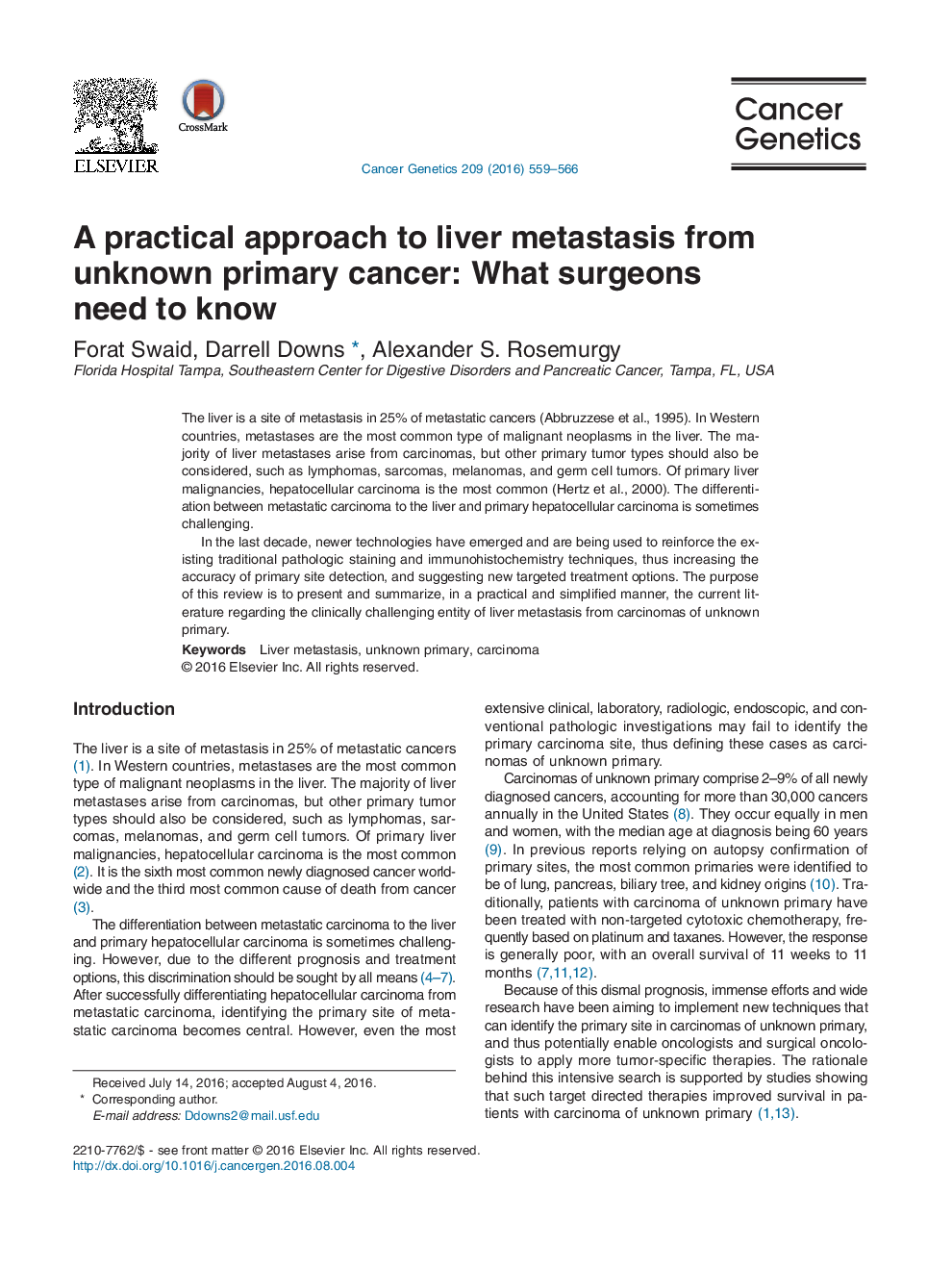| Article ID | Journal | Published Year | Pages | File Type |
|---|---|---|---|---|
| 5525084 | Cancer Genetics | 2016 | 8 Pages |
The liver is a site of metastasis in 25% of metastatic cancers (Abbruzzese et al., 1995). In Western countries, metastases are the most common type of malignant neoplasms in the liver. The majority of liver metastases arise from carcinomas, but other primary tumor types should also be considered, such as lymphomas, sarcomas, melanomas, and germ cell tumors. Of primary liver malignancies, hepatocellular carcinoma is the most common (Hertz et al., 2000). The differentiation between metastatic carcinoma to the liver and primary hepatocellular carcinoma is sometimes challenging.In the last decade, newer technologies have emerged and are being used to reinforce the existing traditional pathologic staining and immunohistochemistry techniques, thus increasing the accuracy of primary site detection, and suggesting new targeted treatment options. The purpose of this review is to present and summarize, in a practical and simplified manner, the current literature regarding the clinically challenging entity of liver metastasis from carcinomas of unknown primary.
